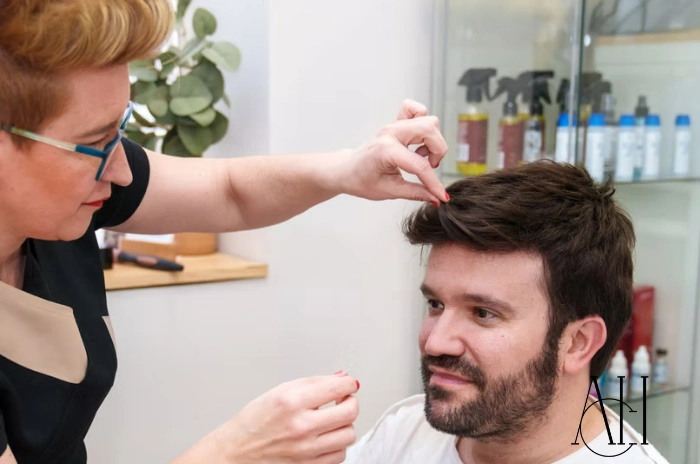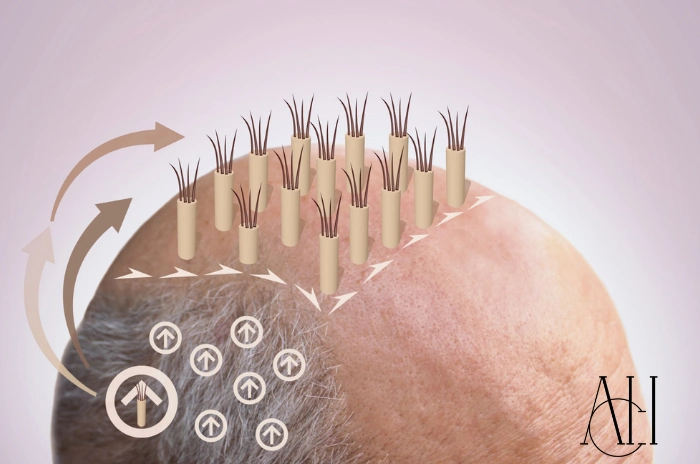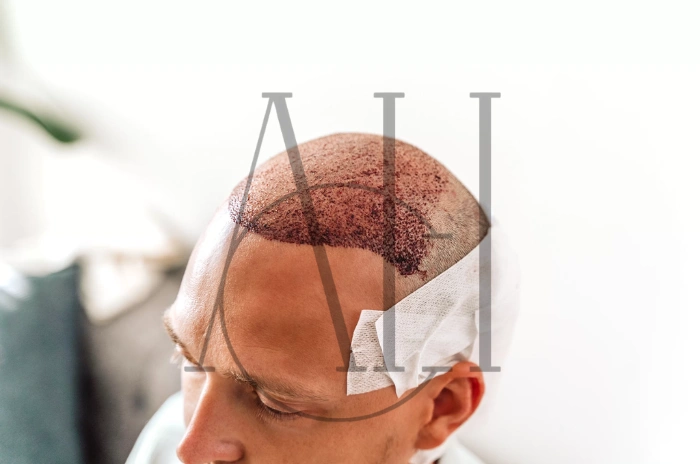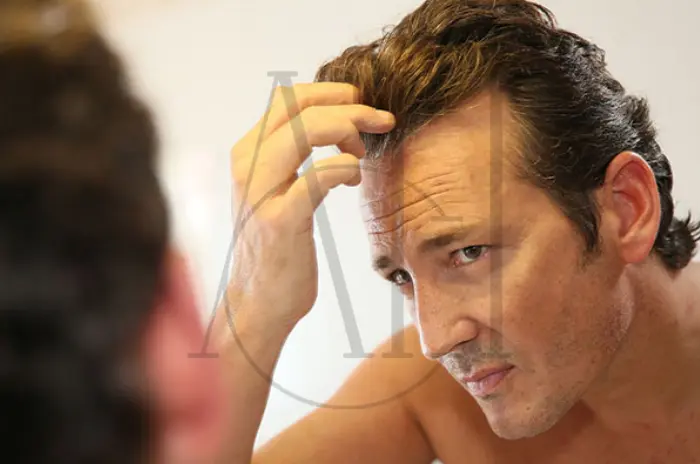Table of Contents
ToggleWhat are the Benefits of Hair Restoration?
Hair restoration can dramatically improve confidence, self-esteem, and quality of life. Whether you choose surgical or non-surgical methods, these treatments offer natural-looking results and can help halt or reverse hair loss progression.
Psychological and Emotional Benefits
Hair restoration often leads to improved self-image, reduced social anxiety, and enhanced mental well-being. Many patients report a boost in personal and professional interactions after treatment.
Physical and Aesthetic Enhancements
Restoring hair can create a younger, more refreshed appearance and balance facial features. This change can positively affect how others perceive you, as well as how you see yourself in the mirror.
Which Hair Restoration Treatment Is Right for You?
Choosing the right treatment depends on your age, hair loss pattern, health status, and expectations. A consultation with a hair restoration specialist is essential to determine the best path forward.
Assessing Your Hair Loss Stage
Different treatments are suitable for different stages of hair thinning or balding. Early stages may benefit from non-surgical options, while advanced hair loss might require surgery for optimal results.
Personalized Treatment Plans
Doctors may recommend combining techniques for optimal, long-term results. A tailored approach ensures that the chosen method aligns with your hair type, goals, and lifestyle.
Who is a Candidate for Non-Surgical Hair Restoration?
Non-surgical options are great for individuals in the early stages of hair thinning or those who are not yet ready for surgery.
Ideal Candidates
Men and women with mild to moderate hair loss, no major health concerns, and realistic expectations. Non-surgical methods are often chosen by those looking to maintain or improve hair health without downtime.
Who Should Consider Other Options?
Those with complete baldness or extensive scarring may benefit more from surgical treatments. A specialist can assess whether donor hair availability or scalp condition affects treatment eligibility.
Albania Hair Clinic – Trapianto Capelli in Albania (@albaniahairclinic)’in paylaştığı bir gönderi
Types Of Non-Surgical Hair Restoration
Non-surgical solutions range from topical and oral medications to advanced technologies and wearable solutions. These methods offer flexibility and are often used in combination for enhanced results.
PRP (Platelet-Rich Plasma) Therapy
How Does PRP Work?
PRP uses the patient’s own blood, processed to concentrate growth factors, which is then injected into the scalp to stimulate follicle regeneration.
Who Can Benefit From PRP?
Ideal for men and women with early-stage hair thinning and no underlying scalp conditions.
After the Procedure
Mild swelling or redness may occur but usually resolves in a day. Follow-up sessions are scheduled monthly for 3–4 months.
Risks and Complications of PRP
Some minor bruising or discomfort at the injection site. Rare risks include infection or allergic reaction.
Advantages and Disadvantages of PRP
Natural and safe, with minimal downtime. However, multiple treatments are needed and results vary.
SMP (Scalp Micropigmentation)
How Does SMP Work?
SMP is a cosmetic tattoo technique that mimics the appearance of a buzz cut or adds density to thinning areas.
Who Can Benefit From SMP?
Best for individuals who keep their hair very short or have diffuse thinning.
After the Procedure
Avoid washing or exposing the scalp to sun for a few days. Results last several years.
Risks and Complications of SMP
Uneven pigmentation or fading may occur; touch-ups are sometimes required.
Advantages and Disadvantages of SMP
Instant visual results and no downtime, but it’s a cosmetic solution—not real hair.
Alma TED Hair Restoration
How Does Alma TED Work?
It uses ultrasound and air pressure to deliver a hair growth serum deep into the scalp.
Who Can Benefit From Alma TED?
Patients with mild to moderate thinning or those who prefer a non-invasive treatment.
After the Procedure
No needles, no discomfort. Patients can resume daily activity immediately.
Risks and Complications of Alma TED
Very low risk; rare sensitivity to the serum may occur.
Advantages and Disadvantages of Alma TED
Painless and effective, but still emerging and not widely available.

Finasteride (Propecia)
How Does Finasteride Work?
It blocks DHT, a hormone that shrinks hair follicles in male pattern baldness.
Who Can Benefit From Finasteride?
Men with early-to-moderate hereditary hair loss.
After the Procedure
Daily tablet required for ongoing results. Visible improvement usually after 3–6 months.
Risks and Complications of Finasteride
Sexual side effects, mood changes, or decreased libido in rare cases.
Advantages and Disadvantages of Finasteride
Clinically proven to slow hair loss, but not recommended for women.
Minoxidil (Rogaine)
How Does Minoxidil Work?
A vasodilator that improves blood flow to hair follicles when applied to the scalp.
Who Can Benefit From Minoxidil?
Both men and women experiencing pattern hair loss.
After the Procedure
Apply twice daily. Results appear after 3–4 months of consistent use.
Risks and Complications of Minoxidil
Scalp dryness or irritation. Rare facial hair growth in women.
Advantages and Disadvantages of Minoxidil
Easy to use and available without prescription, but must be used long-term.
LITFULO: Drug for Alopecia Areata
How Does LITFULO Work?
An oral JAK inhibitor designed to block inflammatory responses causing autoimmune hair loss.
Who Can Benefit From LITFULO?
Individuals diagnosed with moderate to severe alopecia areata.
After the Procedure
Daily use under a doctor’s supervision. Blood tests may be needed.
Risks and Complications of LITFULO
Immunosuppression, infection risk, liver changes, or serious side effects.
Advantages and Disadvantages of LITFULO
Targeted and effective for autoimmune hair loss but requires close medical monitoring.
Hydrafacial Keravive
How Does It Work?
Cleanses, exfoliates, and nourishes the scalp using a patented three-step system.
Who Can Benefit From It?
Those with poor scalp health or early hair thinning.
After the Procedure
No downtime; scalp feels refreshed and hydrated.
Risks and Complications
Very rare sensitivity; otherwise safe and soothing.
Advantages and Disadvantages
Improves scalp condition, not a direct regrowth treatment.

Folix Laser
How Does Folix Laser Work?
Applies light therapy through wearable caps or combs to stimulate follicle activity.
Who Can Benefit?
Patients with thinning hair or slow growth cycles.
After the Procedure
Used multiple times per week for several months. Comfortable for home use.
Risks and Complications
Minimal, though overuse can cause temporary irritation.
Advantages and Disadvantages
Non-invasive and easy to use, but requires consistency and patience.
Hair Systems and Wigs
How Do They Work?
Custom or ready-made hairpieces attached with clips, glue, or adhesive tape.
Who Can Benefit?
Anyone with significant or total hair loss, regardless of cause.
After the Procedure
Regular styling and upkeep are necessary. Some systems require monthly maintenance.
Risks and Complications
Irritation, allergic reactions, or detachment in extreme weather.
Advantages and Disadvantages
Instant transformation, but lacks permanence and requires upkeep.
Low-Level Laser Therapy (LLLT)
How Does LLLT Work?
Uses red light wavelengths to increase ATP production and blood circulation in the scalp.
Who Can Benefit?
Those with early-stage hereditary or hormonal hair loss.
After the Procedure
Comfortable, with no pain or recovery period. Can be done at home.
Risks and Complications
Minimal, but may cause scalp redness if overused.
Advantages and Disadvantages
Painless, easy to use, and complements other treatments, but not effective for all users.
Advanced Techniques for Natural, Lasting Results with Minimal Downtime
Integrated Approaches
Clinics now combine FUE with PRP, laser therapy, or medications to boost success rates. The synergy of methods results in thicker, more natural outcomes.
Clinic Technology in Turkey
Turkish clinics lead the industry in offering cutting-edge tools and multilingual support. Their affordability, hospitality, and expertise draw thousands of international patients annually.
What is Non-Surgical Hair Restoration and Recovery?
Non-surgical options require minimal recovery, making them ideal for busy individuals.
Healing and Results Timeline
Most patients return to normal life the same day. Results begin to appear after several weeks, depending on the method used.
Long-Term Considerations
Maintenance sessions may be required for PRP, laser, or topical treatments. Following aftercare instructions maximizes results and hair retention.
Frequently Asked Questions
What is the difference between surgical and non-surgical hair restoration?
Surgical methods involve transplanting hair (like FUE or FUT), while non-surgical options include PRP therapy, medications, and laser treatments.
Is non-surgical hair restoration effective?
Yes, especially in early stages of hair loss. Treatments like PRP, Minoxidil, and LLLT can slow shedding and promote regrowth.
Who is a good candidate for non-surgical hair loss treatments?
People with mild to moderate thinning, good scalp health, and no underlying medical conditions are ideal candidates.
How long do results from non-surgical treatments last?
Results vary but often require ongoing maintenance. Stopping treatment can lead to gradual hair loss resuming.
Is PRP therapy painful or invasive?
PRP is minimally invasive and uses your own blood. Mild soreness may occur, but most patients resume normal activity the same day.
Are hair systems or wigs a long-term solution?
Hair systems offer immediate results but require upkeep. They’re a great choice for full coverage without medical procedures.



